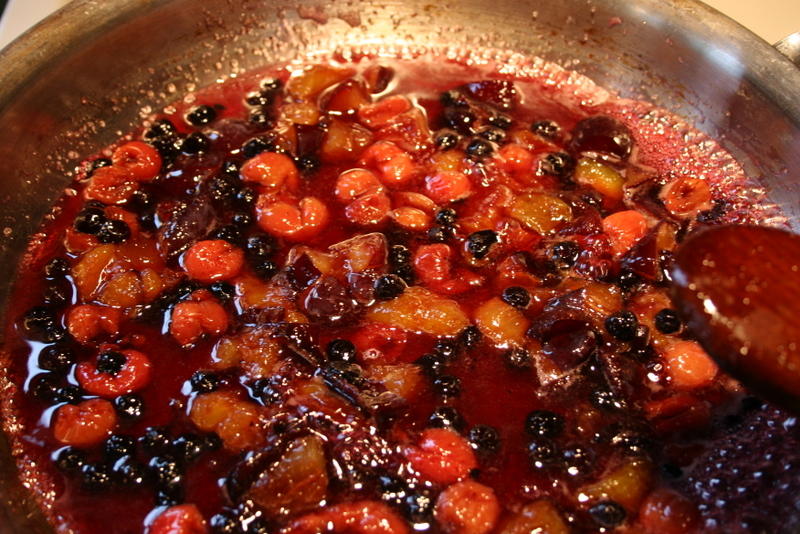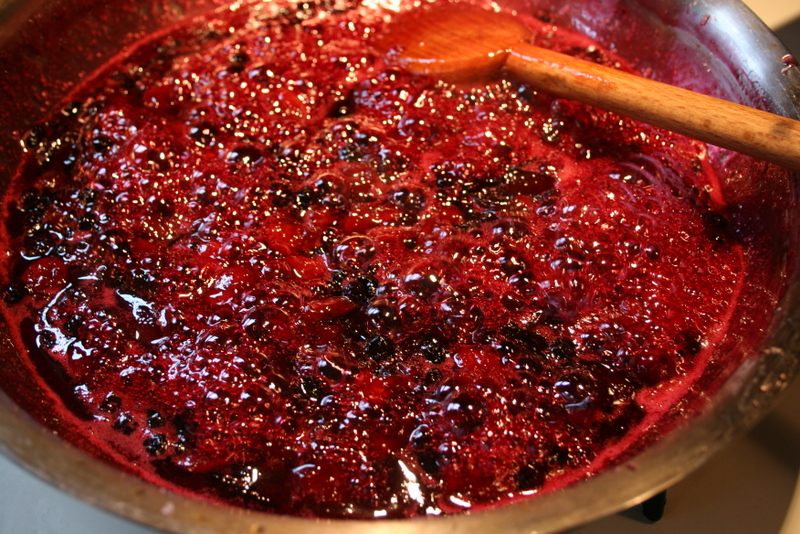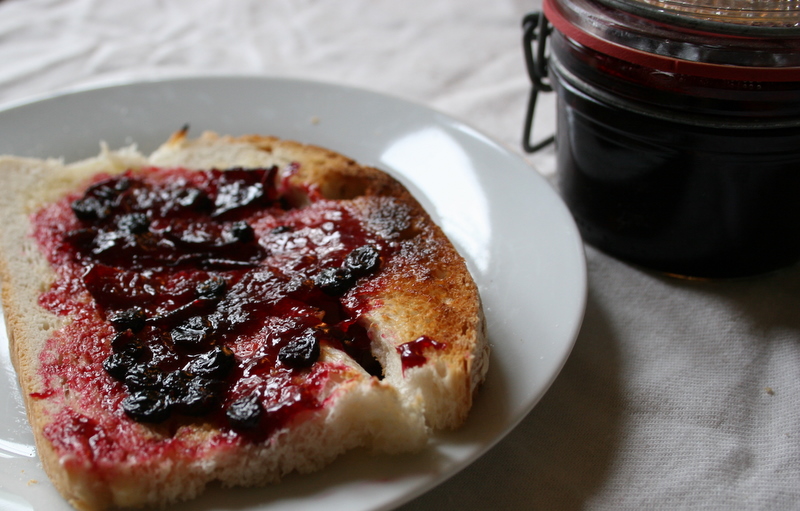FSN has created a guide explaining how to start and maintain a bulk buying club in your community in Newfoundland and Labrador! A bulk buying club is a group of people with similar food preferences who come together to buy food in bulk. All participants of a bulk buying club are involved in the planning, shopping, sorting, and delivering of food. These clubs enable individuals to work with a group of like-minded people to get more with their food dollars.
Warm and Hearty Veggie Cobbler
As the days get shorter and the temperatures begin to plummet, I begin craving those warm, hearty meals that fill the soul (and stomach!). I try to put to good use the wonderful bounty of food harvested from my own backyard, local farmers, and in wild places around the City. The wonderful thing about veggie cobbler is that you can use differen combinations of vegetables depending on what's in your fridge, as well as personal taste. Many of the ingredients I used, such root vegetables and the herbs, were grown right here in Newfoundland! Challenge yourself to see how much of this dish you can make from locally grown produce.
Ingredients
(for the filling):
- 1 large baking potato, peeled and cut into a 3/4-inch pieces
- 1 1/2 cups each peeled and thinly sliced carrots, beets, and celery
- 1/2 cup diced butternut squash
- 3 1/2 tbsp unsalted butter
- 1/2 cup zucchini
- 1 large onion and green onion each, quartered and thinly sliced
- 3 tbsp flour
- 2 1/2 vegetable bouillon cubes dissolved in 1 1/4 cups hot water
- 1 cup milk
- Salt and pepper, to taste
- 2 tsp thyme
- 2 tsp sage
- 2 tsp parsley
- 2 tsp savoury
- 1/3 cup grated Parmesan
(for the topping):
- 3/4 cup yellow cornmeal
- 3 tbsp sugar
- 1 1/2 tsp baking powder
- 1/2 cup milk
- 1 large egg, lightly beaten
- 1 tbsp oil
- 1/2 tsp salt
Directions
- Pre-heat the oven to 400F. On medium heat on the stovetop, place the potato, carrots, beets, celery, and butternut squash in a medium-sized pot and fill with enough water to cover the vegetables plus one inch. Bring to a boil, then allow the vegetables to continue boiling for 4 minutes. Drain and rinse the vegetables with cold water and then set them aside.

- Melt the butter over medium heat in a large, deep skillet. Add the onion and mushrooms and sauté them, stirring often until they're soft for about 4 minutes. Stir in the flour and cook the mixture, stirring nonstop, another 30 seconds. Add the vegetable broth, milk, salt, pepper, thyme, parsley, and sage (these herbs came right out of my garden and were pre-dried to provide me with flavour all winter long!). Continue to stir until the sauce thickens, about 4 minutes.
- Add the vegetables to the sauce and stir well. Add more salt and pepper, if desired, then stir in the Parmesan and bring the filling to a simmer. Thin it with water if its consistency is thicker than potato soup. Transfer to a casserole dish or a large pot, like the cast iron one shown above.
- Make the corn bread topping. In a medium-size bowl, whisk together the cornmeal, sugar, baking powder, and salt. Add the milk, egg, and oil and stir until evenly blended. Spread the batter over the filling. Bake the cobbler until the top is golden brown and the sides are bubbly, about 30 minutes. Allow it to cool slightly before serving. Serves 8.
Note
The key to success in this recipe is to have fun; don't be afraid to experiment with the ingredients and make this recipe into your very own!
Colourful Baked Cod
I was a strict vegetarian/vegan for my formative learning-to-cook-for-myself years, so cooking meat and fish is a big mystery to me at 27. Last year I roasted a chicken and became confused when I couldn’t find the meat. I searched everywhere on top of the chicken for the white meat, only to find skin stretched over nearly bare bones. 20 minutes later I discovered that I had it upside down.
As I started cooking cod fillets I found I really couldn’t fry it without ending up with a mush of fish, completely separated. I’m still waiting for someone to show me how to do that. What I can do is bake a fillet of cod. That is easy. And delicious.
Out of the frying pan, into the... jam jar?
A little while ago, I wrote about my new love of herbed fruit jams. Before that, I told you about the Japanese knotweed jelly I was enjoying. If you hadn't figured it out, I really love making jellies and jams. I've said before that preserves make me feel rich. All lined up in my pantry, they're like luminous jewels, ensuring that, no matter what goes wrong in this world, I have something tasty to spread on my toast.
There was a time when I didn't consider anything less than an 6-pint batch of jam to be worth my time. I wanted, for my efforts, to have at least a dozen 1/2-pint jars gleaming at me, their tops pinging shut amid the steam and the stickiness of my fruit-spattered kitchen. It was thrilling. I felt like an old-fashioned homesteader, a pioneer wife lovingly preserving the season's bounty for my adoring family.
But that was a simpler time, before my family grew to include two boys who, if left unattended for five minutes, will destroy one another or my home (or both). I just don't have the hours I once had to dedicate to the pitting of cherries or the peeling of apples. My preferred method of fruit preservation, these days, is cutting it up, winging it into bags, and stashing it in the deep freeze, then keeping my fingers crossed that we don't lose power for any length of time over the winter.
And yet, this family still needs jam. For toast, for sandwiches, for dropping spoonful-heavy into bowls of thick, white yogurt. So what do I do? I go to the freezer, bust out a few cups of frozen berries or some plum or peach halves, and then toss those into my trusty stainless steel skillet. This is one circumstance when I don't use my cast-iron pan: the iron can discolour the fruit, and the oil that seasons the pan can leave a weird slick on the finished jam. For one jar of jam, I use about a cup and a half to two cups of fruit, and somewhere between three-quarters of a cup and a cup and a half of sugar, depending on how tart the fruit is. If the fruit is in big pieces (like peaches or plums), I cut them up, or just leave them whole and take a potato masher to them as they cook down in the pan. I stir them together in the skillet, and cook them over rather high heat, stirring with a wooden spoon to make sure the fruit doesn't stick. When it's nicely simmering and the individual pieces of fruit are starting to break down (between 5 and 15 minutes, depending on the fruit), I squeeze in about a tablespoon of lemon juice (from a bottle). After another few minutes of simmering the jam should be thickening up nicely. I do the usual test to see if it's set up enough: I keep a bunch of spoons in the freezer, then test the jam by taking one frozen spoon, dropping some of the jam on it, then waiting a minute and seeing if it wrinkles when I stick my finger in it. Wrinkles mean it's ready. Then I scrape the whole thing into a clean jar, put a lid on it, and let it cool completely before putting it in the fridge.
There are some excellent advantages to making one jar of jam at a time. Because it's going straight into the fridge (and then onto my toast), I don't bother setting up the canner or sterilizing everything, any more than I would sterilize containers before packing away leftovers. Squeaky clean is good enough. The small amount is perfect for trying handfuls of fruit leftover from last year's freezer stash, or from the kids' snacks and lunches, or the one or two pieces of fruit looking a bit shriveled on the counter. If the combination works out, you can feel triumphant about having salvaged fruit that would otherwise have ended up in the compost, and if it doesn't work out (which really practically never happens), you can always bake it into a cake or muffins something, rather than having to suffer through a dozen jars of unpleasant preserves. If it doesn't thicken up, no big deal - pour it on ice cream or yogurt or pound cake, and try a new combination for the next jar.
When my kids are a little older, and I can shoo them away for long enough to do some massive batches of jam, I'll be right back into it, I'm sure. I still love those long lines of gleaming jars along the pantry shelf, and I love that sound of snap lids snapping away. But I won't let my lack of time stop me from making delicious jam whenever I have twenty minutes or so to spare. If you've been wary of preserving because it's so time consuming, maybe you just need to start slow - one jar at a time.












